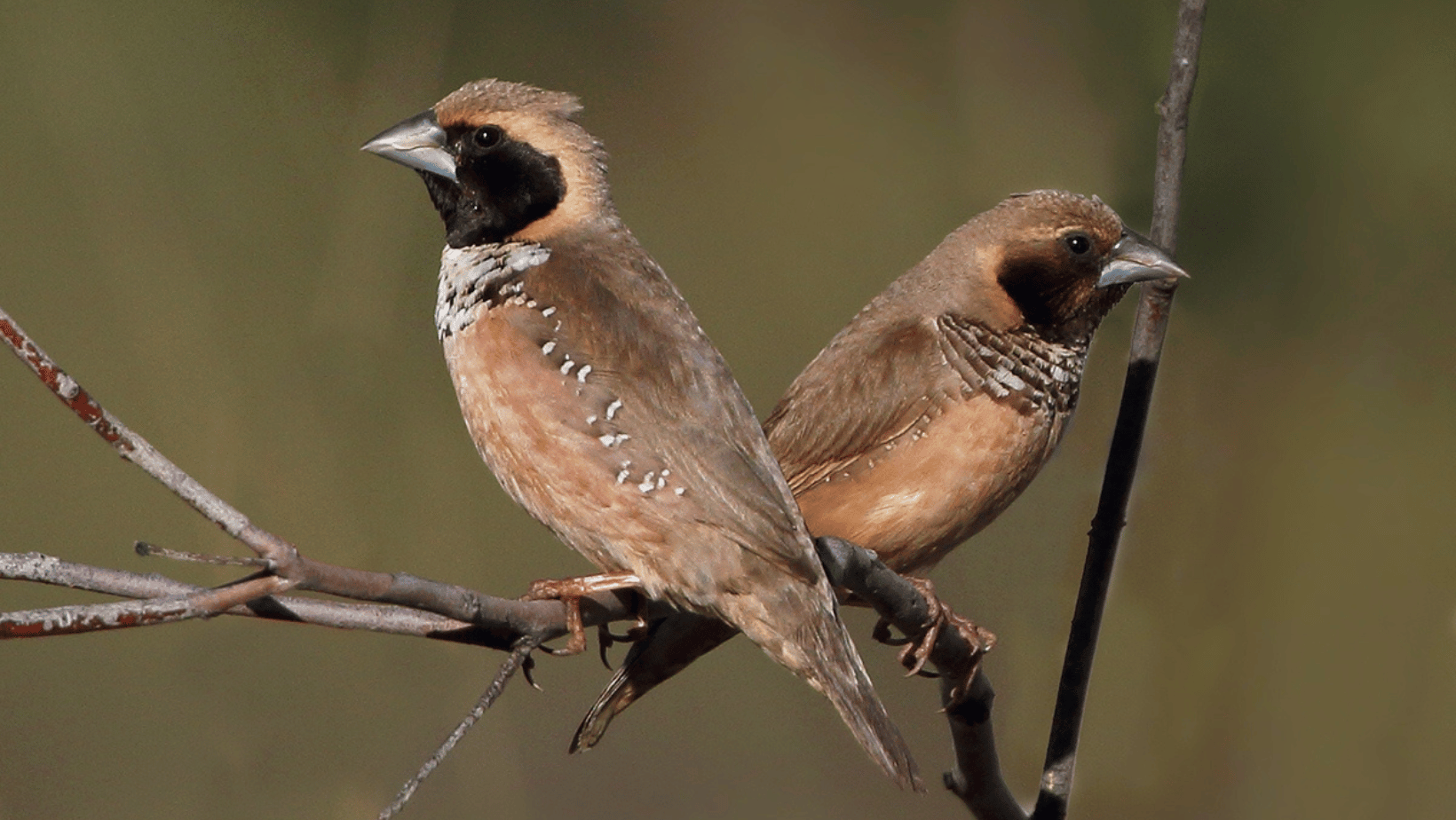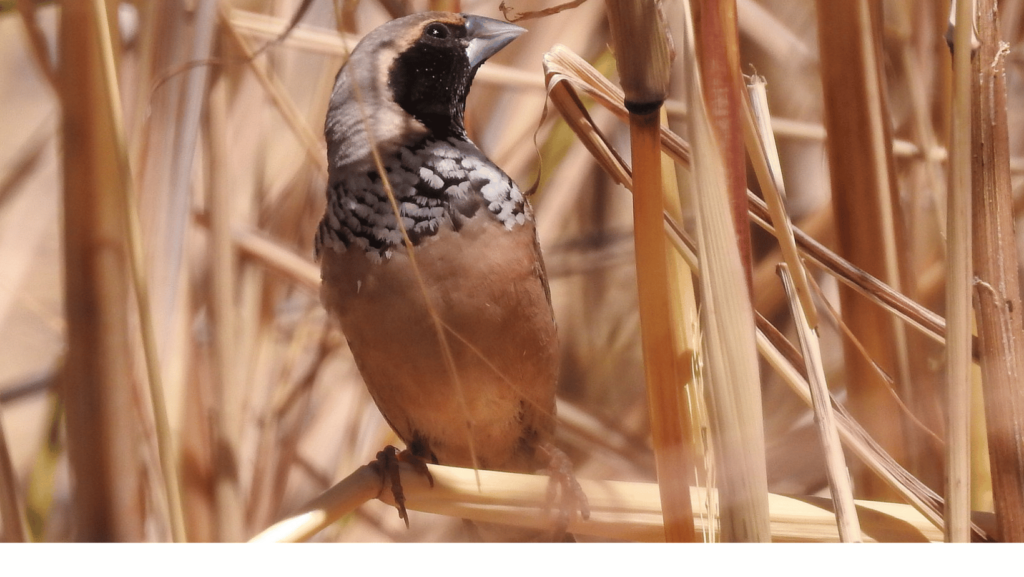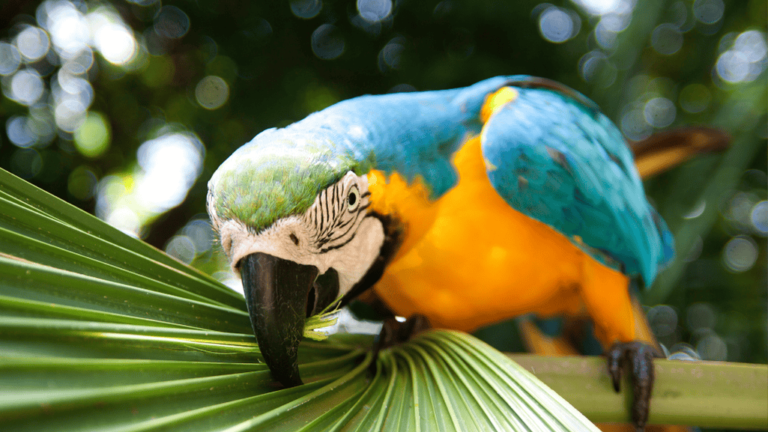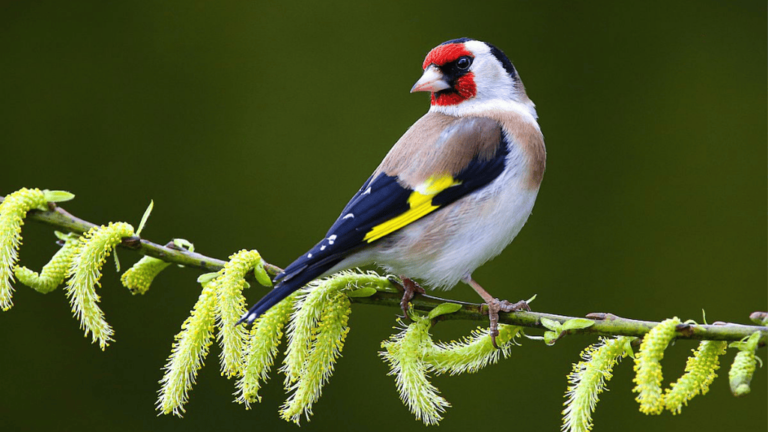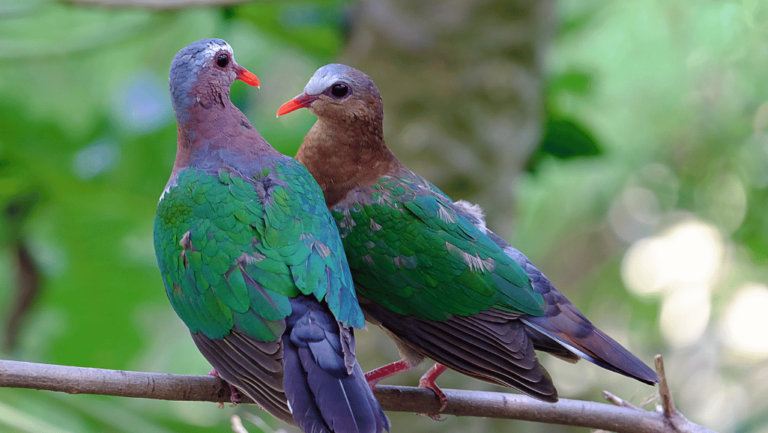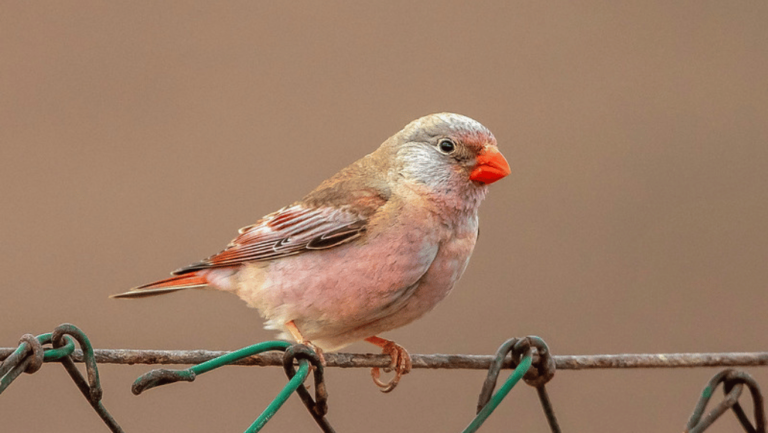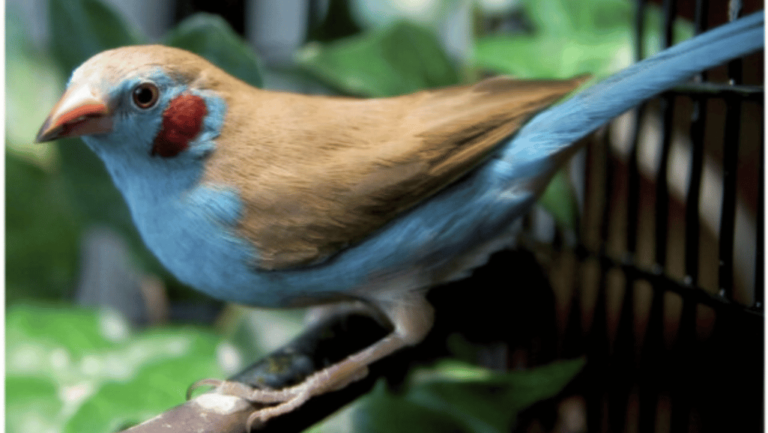Welcome to our exploration of the Pictorella Mannikin Finch bird, a true masterpiece in avian biodiversity. With its vibrant plumage and unique habitat preferences, this bird is a living work of art.
The Pictorella Mannikin Finch, also known simply as Pictorella Mannikin, is a small bird species native to Australia. It is part of the Finch family, known for its diverse range of species. However, the Pictorella Mannikin stands out with its stunning colors and intricate patterns.
Key Takeaways:
- The Pictorella Mannikin Finch bird is a small bird species known for its vibrant colors and intricate patterns.
- It is native to Australia and can be found in various habitats such as grasslands, woodlands, and shrublands.
- These birds are primarily seed-eating songbirds, but they also supplement their diet with small insects and grubs.
- During the breeding season, the male performs a courtship display to attract females.
- Conservation efforts are crucial to protect the habitat and ensure the survival of the Pictorella Mannikin Finch bird.
Physical Description of Pictorella Mannikin Finch birds
The Pictorella Mannikin Finch bird is truly a sight to behold with its striking plumage and unique coloration. The adult male features a combination of black and white hues, making it visually captivating. The head is predominantly black, complemented by a white patch on the forehead that adds a touch of elegance. The body showcases a beautiful interplay of black, white spots, and streaks, creating a mesmerizing pattern. To complete its exquisite appearance, the Pictorella Mannikin Finch bird possesses a vibrant orange beak that serves as a brilliant contrast to its plumage.
The female Pictorella Mannikin Finch bird exhibits a similar coloration, although generally, the overall appearance tends to be less vibrant than that of the males. However, they still retain the distinctive black and white pattern, showcasing their own unique beauty. Furthermore, both males and females possess a black tail with white tips, further enhancing their ornamental appeal.
As for the juveniles, they initially display a more muted coloration, gradually transitioning into their adult plumage as they mature. This transformation adds an element of intrigue and wonder to the species.
Pictorella Mannikin Finch Bird Colors and Patterns:
- Male: Black head, white patch on the forehead, black and white body, bright orange beak, black tail with white tips
- Female: Similar coloration to male but generally duller in appearance
- Juveniles: Initially muted coloration, develop adult plumage as they mature
| Physical Attribute | Description |
|---|---|
| Head | Black with a white patch on the forehead |
| Body | Mostly black with white spots and streaks |
| Beak | Bright orange |
| Tail | Black with white tips |
The Pictorella Mannikin Finch bird’s plumage showcases a remarkable blend of colors and patterns, truly making it a work of art in avian form.
Habitat and Distribution of Pictorella Mannikin Finch birds
Pictorella Mannikin Finch birds, native to Australia, inhabit a diverse range of habitats including grasslands, woodlands, and shrublands. These small birds are predominantly found in the southern regions of Australia, particularly in Western Australia and South Australia.
Known for their adaptability, Pictorella Mannikin Finch birds thrive in open areas with sparse vegetation. They can often be spotted foraging on the ground, where they search for seeds and insects to sustain their diet.
To gain a better understanding of their habitat preferences, let’s explore the characteristics and features of each of these environments:
Grasslands
Grasslands play a crucial role in providing habitat for Pictorella Mannikin Finch birds. These open areas with tall grasses are ideal for foraging, as they offer easy access to seeds and insects. The bird’s small size and agile nature allow it to navigate through the grasses with ease, ensuring a steady food supply.
Woodlands
Woodlands, characterized by scattered trees and shrubs, provide Pictorella Mannikin Finch birds with nesting sites and shelter. The birds take advantage of the trees to build their nests and seek protection from predators. The diverse plant life in woodlands also supports a variety of insects, which serve as an additional food source for these finches.
Shrublands
Shrublands, with their low-growing shrubs and bushes, offer Pictorella Mannikin Finch birds ample opportunities for foraging and nesting. The dense vegetation provides cover and protection from predators, while the shrubs themselves harbor insects that the birds feed on. These habitats are often found adjacent to open grasslands and provide a transition zone between grasslands and woodlands.
In summary, Pictorella Mannikin Finch birds are adaptable species that thrive in a range of habitats, including grasslands, woodlands, and shrublands. Their distribution is primarily concentrated in the southern parts of Australia, particularly Western Australia and South Australia. By observing these birds in their natural habitat, birdwatchers and researchers can gain valuable insights into the fascinating behavior and ecology of these avian wonders.
Feeding Habits of Pictorella Mannikin Finch birds
Pictorella Mannikin Finch birds are seed-eating songbirds, which means their diet mainly consists of various seeds. They have a strong beak adapted for cracking open seeds. In addition to seeds, they also supplement their diet with small insects and grubs. These birds showcase their remarkable foraging skills on the ground, where they can often be seen hopping and pecking in search of their next meal.
These resourceful birds rely on their strong beaks to crack open seeds and extract the inner nutrition. Interestingly, they have a specialized technique for foraging. They use their beaks to dig into the ground and uncover hidden seeds and insects. This foraging behavior allows Pictorella Mannikin Finch birds to access a variety of food sources in their environment.
While seeds form the bulk of their diet, the inclusion of small insects and grubs provides additional protein and nutrients. This diversified diet contributes to their overall health and well-being. Moreover, their adaptability in foraging ensures that they can sustain themselves even in challenging environmental conditions.
Seed Preference and Foraging Behavior
Pictorella Mannikin Finch birds demonstrate a preference for specific seed types. They are particularly fond of seeds from grasses, wildflowers, and small shrubs. These seeds provide essential nutrients and energy for their survival. This preference also reflects their adaptability to different habitats, as they can exploit the available seeds in various environments.
When foraging, Pictorella Mannikin Finch birds employ agile movements and quick hops to cover a large area. They meticulously search the ground, using their sharp eyesight to locate seeds and insects. Their diligent foraging behavior ensures that they do not overlook any potential food sources, maximising their chances of finding sustenance.
Comparison of Seed Types Preferred by Pictorella Mannikin Finch birds
| Seed Type | Benefits |
|---|---|
| Grass seeds | Rich in carbohydrates and energy |
| Wildflower seeds | Provide diverse nutrients and antioxidants |
| Shrub seeds | Source of essential fats and oils |
By including a range of seeds in their diet, Pictorella Mannikin Finch birds ensure they receive a balanced nutrition profile. This enables them to maintain their health and energy levels, supporting their reproductive success and overall survival.
The combination of their seed-based diet and foraging behavior showcases the resourcefulness of Pictorella Mannikin Finch birds. Their ability to find and extract food from various sources underscores their adaptability in different environments.
Breeding and Reproduction of Pictorella Mannikin Finch birds
Pictorella Mannikin Finch birds are known for their unique breeding and reproductive behaviors. These birds are monogamous, forming long-term pair bonds with their mates. During the breeding season, which occurs in the spring and summer months, these birds engage in elaborate courtship displays to attract a mate.
The male Pictorella Mannikin Finch showcases his vibrant plumage and performs intricate songs to woo females. This courtship display is a visual and auditory spectacle, showcasing the male’s genetic fitness and ability to provide for offspring. The female, impressed by these displays, selects a suitable mate.
Once a pair has formed, they work together to build a nest using grasses and twigs. The nest is carefully woven and provides a safe and secure environment for their eggs and future offspring. The nesting process involves meticulous construction, with both male and female contributing to the nest-building efforts.
After the nest is completed, the female Pictorella Mannikin Finch lays several eggs, usually ranging from 3 to 6 in number. Both parents take turns incubating the eggs, ensuring they are kept warm and protected. This shared responsibility strengthens the bond between the mating pair and improves the chances of successful hatching.
Once the eggs hatch, both parents participate in the feeding and care of their young. They tirelessly search for food, including seeds and insects, to provide nourishment for their offspring. This collaborative effort ensures the survival and growth of the young Pictorella Mannikin Finches.
The breeding and reproductive behaviors of Pictorella Mannikin Finch birds are truly remarkable. Their courtship displays, nest-building endeavors, and shared parental duties showcase the intricate and fascinating nature of avian breeding. Through these behaviors, these birds ensure the continuation of their species and contribute to the rich biodiversity of the avian world.
Conservation Status of Pictorella Mannikin Finch birds
The Pictorella Mannikin Finch bird is currently classified as a species of least concern by the International Union for Conservation of Nature (IUCN). However, its population is believed to be declining due to habitat loss and fragmentation. Conservation efforts are in place to protect its habitat and raise awareness about the importance of preserving this unique species.
Conservation plays a vital role in safeguarding the Pictorella Mannikin Finch bird and its habitat. As a threatened species, proactive measures are being taken to ensure their survival and prevent further population decline.
The Importance of Conservation
The Pictorella Mannikin Finch bird’s decline in population is primarily attributed to habitat loss and fragmentation. Factors such as urbanization, agricultural expansion, and land clearing have significantly impacted their natural habitats. Conservation efforts aim to counteract these threats and preserve the bird’s unique habitat and biodiversity.
Habitat Protection
To safeguard the Pictorella Mannikin Finch bird’s habitat, various conservation initiatives focus on habitat protection and restoration. This includes creating protected areas, implementing land management practices that promote habitat conservation, and raising awareness among local communities.
Community Involvement
Conservation efforts also emphasize community involvement and education to foster a sense of responsibility and appreciation for the Pictorella Mannikin Finch bird’s conservation. By engaging with local communities, conservationists can encourage sustainable practices and minimize human-induced threats to the species and its habitat.
Research and Monitoring
Scientific research and monitoring programs are crucial in assessing the population status and understanding the ecological requirements of Pictorella Mannikin Finch birds. These studies contribute to the development of effective conservation strategies, allowing conservationists to make informed decisions and take proactive measures to protect the species.
Collaboration and Partnerships
Conservation organizations, government agencies, and local communities collaborate to support the conservation of Pictorella Mannikin Finch birds. By working together, these entities can pool resources, share expertise, and implement comprehensive conservation plans that address the ongoing threats to the species.
Migration Patterns of Pictorella Mannikin Finch birds
Pictorella Mannikin Finch birds, known for their sedentary nature, do not engage in long-distance migration. They typically stay within their preferred habitat throughout the year. However, they do exhibit seasonal movements in response to changes in food availability and breeding conditions.
In certain seasons, Pictorella Mannikin Finch birds may shift their location to find better sources of food or suitable breeding grounds. These movements are characterized by short-distance travels within their local range.
During the breeding season, the birds may move to areas with abundant food resources and favorable nesting conditions. This ensures the availability of sufficient nourishment for both the adult birds and their offspring.
The migratory behavior of Pictorella Mannikin Finch birds is driven by their adaptive instincts, allowing them to thrive in different environments as they follow the availability of resources throughout the year.
To visualize the migratory behavior and seasonal movements of Pictorella Mannikin Finch birds, refer to the table below:
| Season | Location | Reason for Movement |
|---|---|---|
| Spring | Western Australia | Moving to breeding grounds with plentiful food resources |
| Summer | South Australia | Seeking suitable nesting sites and optimal breeding conditions |
| Autumn | Grasslands in Victoria | Following food sources as they become available |
| Winter | Coastal regions of Tasmania | Searching for milder climates and abundant food |
Birdwatching Opportunities for Pictorella Mannikin Finch birds
For birdwatching enthusiasts, observing Pictorella Mannikin Finch birds in their natural habitat provides a unique and captivating experience. These magnificent birds can be found in various locations throughout Australia, particularly in Western Australia and South Australia. Birdwatchers will delight in witnessing these finches as they forage for food on the ground, showcasing their vibrant plumage.
Whether you are an avid birdwatcher or simply appreciate the beauty of avian species, observing Pictorella Mannikin Finch birds in Australia offers a rewarding and enchanting experience. As you immerse yourself in the natural surroundings, you can witness these fascinating birds in their element, showcasing their unique behaviors and vibrant colors.
To make the most of your birdwatching adventure, consider these key tips:
- Bring binoculars or a spotting scope to observe the finches from a distance without disturbing them.
- Choose the early morning or late afternoon for optimal birdwatching conditions, when the birds are more active.
- Visit areas with suitable habitats such as grasslands, woodlands, and shrublands, where Pictorella Mannikin Finch birds are known to reside.
- Practice patience and silence to blend into the environment and increase the chances of spotting these elusive birds.
- Take note of their feeding behaviors, patterns of movement, and interactions with other bird species for a comprehensive birdwatching experience.
By engaging in birdwatching and observation, you not only get to appreciate the beauty of Pictorella Mannikin Finch birds but also contribute to the conservation efforts and understanding of these captivating avian species.
Finch Ornithology and Research on Pictorella Mannikin Finch birds
Pictorella Mannikin Finch birds have been the subject of extensive scientific research and studies in the field of ornithology. Researchers have dedicated their efforts to better understand the behavior, breeding habits, and habitat preferences of these fascinating birds, contributing to our overall knowledge of bird biodiversity and conservation.
Studies on Pictorella Mannikin Finch birds have revealed valuable insights into their social structure, vocalizations, and foraging behavior. Researchers have carefully observed and documented their interactions within their natural habitats, shedding light on their intricate social dynamics and communication patterns.
One particularly interesting area of research focuses on the breeding habits of Pictorella Mannikin Finch birds. Scientists have investigated their courtship displays, nesting behavior, and parental care, uncovering the remarkable strategies these birds employ to ensure the survival of their offspring.
Furthermore, studies have explored the specific habitat requirements of Pictorella Mannikin Finch birds, examining their preferences for grasslands, woodlands, and shrublands. By understanding their habitat preferences, researchers can provide valuable recommendations for habitat conservation and management initiatives.
The research conducted on Pictorella Mannikin Finch birds not only deepens our understanding of this unique species but also provides crucial information for the conservation and preservation of avian biodiversity as a whole. By studying their behavior, researchers can develop effective conservation strategies that address the specific needs of these birds and their habitats.
In summary, scientific research and studies in the field of ornithology have played a significant role in unraveling the mysteries surrounding Pictorella Mannikin Finch birds. Through these efforts, researchers have expanded our knowledge of bird biodiversity and reinforced the importance of conservation for the long-term survival of these beautiful and captivating birds.
Key Research Findings on Pictorella Mannikin Finch Birds:
- Behavioral patterns and social dynamics
- Breeding habits and courtship displays
- Parental care and nesting behavior
- Habitat preferences and conservation needs
| Research Areas | Key Findings |
|---|---|
| Behavioral patterns and social dynamics | Pictorella Mannikin Finch birds exhibit complex social interactions, including flocking behavior and vocalizations that play a vital role in communication. |
| Breeding habits and courtship displays | Males engage in elaborate courtship displays involving intricate vocalizations and colorful plumage to attract females for successful reproduction. |
| Parental care and nesting behavior | Both male and female Pictorella Mannikin Finch birds actively participate in nest-building, incubation, and feeding of the young, demonstrating cooperative breeding behaviors. |
| Habitat preferences and conservation needs | Research has identified the specific habitat requirements of Pictorella Mannikin Finch birds, highlighting the need for habitat conservation and management to ensure their long-term survival. |
Conservation Efforts for Pictorella Mannikin Finch birds
Conservation organizations and initiatives play a vital role in protecting the habitat of Pictorella Mannikin Finch birds and raising awareness about the importance of conserving this unique species. These efforts focus on habitat protection, restoration, research, and education programs that foster a better understanding of the conservation needs of these birds.
One prominent organization dedicated to the preservation of bird species and their habitats is the Audubon Society. Through their collaborative efforts with local communities, scientists, and policymakers, they work towards safeguarding crucial habitats and implementing sustainable practices to ensure the survival of Pictorella Mannikin Finch birds and other avian species.
Habitat protection is a top priority for conservation organizations. These efforts involve identifying key areas for preservation and implementing measures to mitigate habitat loss and fragmentation. By preserving the grasslands, woodlands, and shrublands where Pictorella Mannikin Finch birds thrive, these organizations aim to maintain the essential ecological balance and prevent the decline of this species.
Key Conservation Organizations working for Pictorella Mannikin Finch birds:
- The Audubon Society
- World Wildlife Fund (WWF)
- Australian Conservation Foundation
- BirdLife Australia
- The Nature Conservancy
These organizations collaborate with local communities, governments, and researchers to develop conservation strategies and implement projects that protect the habitats of Pictorella Mannikin Finch birds. By combining scientific research, advocacy, community engagement, and policy initiatives, these conservation organizations strive to make a meaningful impact in ensuring the survival and well-being of this unique bird species.
| Conservation Organization | Focus Areas |
|---|---|
| The Audubon Society | Habitat protection, research, education |
| World Wildlife Fund (WWF) | Species conservation, habitat restoration |
| Australian Conservation Foundation | Lobbying, policy advocacy, community engagement |
| BirdLife Australia | Bird monitoring, habitat conservation, education |
| The Nature Conservancy | Ecological restoration, land management |
Conclusion
The Pictorella Mannikin Finch bird is a true masterpiece of avian biodiversity in Australia. From its vibrant plumage to its unique habitat preferences, these birds captivate both birdwatchers and researchers. Their presence in the ecosystem highlights the importance of conservation efforts to ensure their continued survival.
By protecting the habitat and raising awareness about the significance of Pictorella Mannikin Finch birds, we can safeguard not only their species but also the rich avian biodiversity of Australia. Observing and studying these birds provide valuable insights into the intricate workings of the natural world.
As we strive to preserve the Pictorella Mannikin Finch bird and its role in the ecosystem, we contribute to the conservation of avian biodiversity as a whole. Every effort, big or small, can make a difference in protecting these stunning birds and their vital contribution to our natural heritage.
Frequently Asked Questions
What is the Pictorella Mannikin Finch bird?
The Pictorella Mannikin Finch bird, also known as the Pictorella Mannikin, is a small bird species native to Australia known for its unique and artistic plumage.
What is the physical description of Pictorella Mannikin Finch birds?
Adult male Pictorella Mannikin Finch birds have a black head with a white patch on the forehead, a mostly black body with white spots and streaks, and a bright orange beak. The females have similar coloration but are generally duller in appearance.
Where can Pictorella Mannikin Finch birds be found?
Pictorella Mannikin Finch birds can be found in a variety of habitats in Australia, including grasslands, woodlands, and shrublands. They are mainly found in the southern parts of Australia, particularly in Western Australia and South Australia.
What are the feeding habits of Pictorella Mannikin Finch birds?
Pictorella Mannikin Finch birds are seed-eating songbirds that mainly consume various seeds. They have a strong beak adapted for cracking open seeds and also feed on small insects and grubs found on the ground.
How do Pictorella Mannikin Finch birds breed and reproduce?
Pictorella Mannikin Finch birds are monogamous and form long-term pair bonds. They breed during the spring and summer months, with the male performing a courtship display to attract females. Once a pair has formed, they build a nest together and both parents take turns incubating the eggs and caring for the young.
What is the conservation status of Pictorella Mannikin Finch birds?
The Pictorella Mannikin Finch bird is currently classified as a species of least concern by the International Union for Conservation of Nature (IUCN). However, its population is declining due to habitat loss and fragmentation, making conservation efforts crucial.
Do Pictorella Mannikin Finch birds migrate?
Pictorella Mannikin Finch birds are generally sedentary and remain in their preferred habitat year-round. However, some seasonal movements have been noted in response to changes in food availability and breeding conditions.
Where can I go birdwatching for Pictorella Mannikin Finch birds?
Pictorella Mannikin Finch birds can be observed in their natural habitat in various locations throughout Australia, particularly in Western Australia and South Australia. Birdwatchers can enjoy watching these birds forage for food on the ground and admire their vibrant plumage.
What research has been conducted on Pictorella Mannikin Finch birds?
Researchers have conducted studies on the behavior, breeding habits, and habitat preferences of Pictorella Mannikin Finch birds to gain a better understanding of this species. These studies contribute to our overall knowledge of bird biodiversity and conservation.
What conservation efforts are in place for Pictorella Mannikin Finch birds?
Several conservation organizations and initiatives are working to protect the habitat of Pictorella Mannikin Finch birds and raise awareness about the importance of conserving this unique species. These efforts include habitat restoration, research, and education programs.
What makes Pictorella Mannikin Finch birds unique?
Pictorella Mannikin Finch birds are a stunning example of avian biodiversity in Australia. With their vibrant plumage and unique habitat preferences, they offer birdwatchers and researchers a fascinating subject to observe and study.


